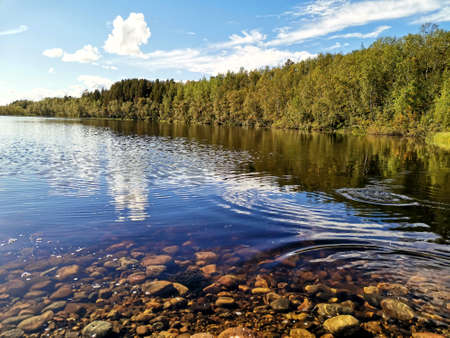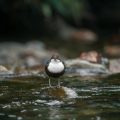1. Origins of Stillwater Fly Fishing in Britain
The roots of stillwater trout fly fishing in the United Kingdom can be traced back to the early days when river fly fishing dominated the angling scene. Historically, British anglers were primarily focused on chalk streams and fast-flowing rivers, with iconic waters such as the Test and Itchen setting the gold standard for traditional fly fishing methods. However, as demand for accessible fisheries increased and the Victorian era ushered in a wave of engineering projects, reservoirs and managed lakes began to appear across the landscape. These new bodies of water presented a fresh challenge and opportunity for local anglers.
The adaptation from river to stillwater environments was not immediate. Early practitioners experimented by transferring established river techniques, tackle, and patterns to lakes and reservoirs. They soon discovered that trout behaviour, aquatic insect life, and even wind conditions called for innovative approaches. Anglers started refining their flies and presentation styles to suit the unique demands of stillwater fishing, giving rise to new traditions within British angling culture.
As these adaptations took hold, written records and anecdotal accounts from the late 19th and early 20th centuries began documenting this evolution. Influential figures such as Frederic Halford and G.E.M. Skues played pivotal roles in developing techniques and philosophies that bridged the gap between river and stillwater fly fishing. Their contributions helped cement stillwater fly fishing as a distinctive facet of British sporting heritage, setting the stage for further innovation and widespread popularity in subsequent decades.
2. Development of Tackle and Techniques
The evolution of stillwater trout fly fishing in the United Kingdom is closely tied to the innovative spirit of British anglers, who have continually refined tackle and techniques to suit the unique challenges of reservoirs, lakes, and lochs. From the late Victorian period, when stillwater fly fishing first gained widespread attention, each era has brought forward new ideas and equipment designed to outwit ever-wary trout.
Victorian Innovations: Laying the Foundations
During the Victorian era, anglers began adapting traditional river gear for stillwaters. Longer rods made from greenheart or split cane allowed for greater reach and delicate presentation over larger expanses of water. Reels, often brass or ebonite, provided smooth drag essential for battling robust lake trout. Early fly patterns mimicked native aquatic insects and small fish, with popular patterns like the “Blae & Black” and “March Brown” making regular appearances in anglers’ fly boxes.
Twentieth Century Advances: Materials and Methods
The 20th century witnessed a revolution in tackle materials. The introduction of hollow fibreglass rods after WWII offered lighter, stronger alternatives to wood, making longer casting sessions feasible. By the 1970s, carbon fibre rods became the gold standard—lighter still, with fast action tips perfect for precise casts on breezy British reservoirs. Meanwhile, reels transitioned to lightweight alloys with sophisticated disc drags for improved fish control.
Key Equipment Developments
| Era | Rods | Lines | Reels | Flies |
|---|---|---|---|---|
| Victorian (1800s) | Greenheart/Split Cane (10-12ft) | Silk Lines | Brass/Ebonite Centrepin | Blae & Black, March Brown |
| Mid-20th Century | Fibreglass (9-11ft) | PVC-Coated Floating/Sinking Lines | Light Alloy with Basic Drag | Buzzer, Diawl Bach |
| Modern Day | Carbon Fibre (9-10ft) | Specialised Stillwater Lines (Intermediate/Di7) | CNC Machined Disc Drag Reels | Damsel Nymph, Booby, Blob |
Modern Techniques: Precision and Adaptability
The British approach to stillwater trout fishing today is defined by tactical versatility. Anglers commonly use floating lines with long leaders for dry fly work during summer hatches or switch to fast-sinking lines in deep waters during colder months. The development of innovative fly patterns such as the Booby, Blob, and Damsel Nymph reflects a culture of experimentation aimed at imitating both natural prey and provoking aggressive strikes from stocked rainbows or wild browns.
Cultural Notes: British Terminology and Tactics
Terms like “washing line rig”, “loch-style drifting”, and “pulling lures” are now part of everyday parlance among UK stillwater enthusiasts. These methods emphasise teamwork (as seen in boat competitions), strategic retrieves, and an acute awareness of weather patterns—hallmarks of British angling tradition that continue to shape tackle development and technique refinement across the country.

3. Notable Waters and Their Impact
Throughout the United Kingdom, several iconic stillwaters have played a pivotal role in the development and popularisation of trout fly fishing. Among these, Rutland Water, Grafham Water, and Chew Valley Lake stand out as prime examples of how specific fisheries have influenced not only the sport’s evolution but also its community and culture.
Rutland Water: The Flagship Reservoir
Opened in the 1970s, Rutland Water in the East Midlands quickly became a beacon for anglers across Britain. Covering over 3,000 acres, it set new standards for stocked trout fisheries with its sheer size and quality of fish. Rutlands vast expanse required innovative tactics and encouraged experimentation with new fly patterns, sinking lines, and boat fishing strategies. Its success attracted competitions, clubs, and international attention, cementing its status as a model for other stillwater fisheries.
Grafham Water: A Hub of Innovation
Located near Huntingdon in Cambridgeshire, Grafham Water is renowned for its productive waters and diverse habitat. Since its opening in 1966, it has fostered a vibrant angling scene and been at the forefront of many technical advancements in British stillwater fly fishing. Grafham’s clear water and abundance of aquatic insects inspired the development of imitative flies like the buzzer and shrimp patterns now synonymous with modern UK stillwater angling. It remains a testing ground for new techniques and regularly hosts national competitions.
Chew Valley Lake: Bridging Tradition and Modernity
Situated near Bristol, Chew Valley Lake offers a unique blend of tradition and innovation. Established in 1956, Chew Valley is celebrated both for its scenic beauty and its impressive brown and rainbow trout stocks. The lake has long been a proving ground for top anglers from the South West and beyond. It has contributed significantly to the refinement of reservoir tactics such as nymph fishing on floating lines—methods that have since spread throughout the UK angling community.
The Broader Influence
The establishment of these renowned waters not only increased accessibility to quality trout fishing but also played an essential role in shaping the social fabric of British angling. They became centres for knowledge exchange, friendly competition, and innovation—helping to elevate the profile of stillwater fly fishing both nationally and internationally.
Legacy for Future Generations
Together, Rutland Water, Grafham Water, and Chew Valley Lake have left an indelible mark on the sport. Their influence extends far beyond their banks: they continue to inspire new generations of anglers, foster community spirit, and drive ongoing advancements within UK fly fishing culture.
4. Cultural Significance and Club Life
The history of stillwater trout fly fishing in the United Kingdom is deeply intertwined with British culture, particularly through the strong presence of angling clubs and syndicates. From Victorian times onwards, these organisations have played a pivotal role in shaping the sport’s traditions, etiquette, and social fabric.
The Role of Angling Clubs
Angling clubs emerged as central hubs for enthusiasts to share knowledge, foster camaraderie, and manage local waters. Membership often came with a sense of pride and belonging, with clubs setting high standards for sportsmanship and conservation. These clubs not only provided access to prime fisheries but also served as places for exchanging stories, learning new techniques, and upholding the unwritten rules that define British angling culture.
Syndicates: Shared Waters, Shared Values
Beyond traditional clubs, syndicates—smaller groups managing specific stretches of water—became popular as stillwater fisheries expanded. Members typically contribute to maintenance costs and are involved in stocking and habitat management decisions. This model encourages responsible stewardship and a sense of collective ownership, reinforcing respect for both fish stocks and fellow anglers.
Social Traditions in Stillwater Fly Fishing
Stillwater fly fishing has always been more than just catching trout; it is about rituals and relationships that enrich the experience. From post-fishing gatherings at the local pub to annual club dinners celebrating notable catches, social customs play a significant part in making this pastime distinctly British.
Comparison of Angling Clubs and Syndicates
| Aspect | Angling Clubs | Syndicates |
|---|---|---|
| Membership Size | Larger, open to wider community | Smaller, selective membership |
| Water Access | Multiple waters or club-owned lakes | Specific stretches or single lakes |
| Decision Making | Committee-based or democratic voting | Consensus among members |
| Cultural Focus | Events, competitions, education | Stewardship, exclusivity, tradition |
| Traditions | Annual meets, open days, charity events | Private gatherings, shared management duties |
The Cherished British Pastime
Together, angling clubs and syndicates have established stillwater trout fly fishing as one of Britain’s most cherished pastimes. The traditions they uphold—respect for nature, fellowship among anglers, and commitment to conservation—reflect broader values found throughout British society. Whether casting lines on a misty reservoir at dawn or sharing tales over a pint after a day’s fishing, these cultural elements ensure that stillwater trout fly fishing continues to thrive as a uniquely British pursuit.
5. Modern Trends and Conservation
In recent years, stillwater trout fly fishing in the United Kingdom has experienced a significant transformation driven by the need for sustainable fisheries management and environmental awareness. Modern approaches focus not only on angling success but also on preserving the delicate balance of aquatic ecosystems. Today, most fisheries adopt responsible stocking policies, carefully considering both the quantity and type of trout introduced into lakes and reservoirs. The use of triploid (sterile) trout is now commonplace, as these fish cannot breed and therefore reduce the risk of genetic dilution in native wild populations.
Stocking Policies and Their Impact
Historically, many stillwaters were stocked heavily with farmed brown and rainbow trout to guarantee good sport. However, this practice often put pressure on local ecosystems and sometimes led to negative impacts on native species. Modern stocking regimes prioritise sustainability by favouring lower densities of stocked fish and increasingly promoting wild or triploid trout over fertile farmed stock. This shift helps maintain ecological balance and protects the genetic integrity of indigenous trout populations.
The Rise of Catch-and-Release Ethics
Catching and keeping every fish is no longer seen as best practice among UK anglers. Instead, catch-and-release has become a cornerstone of modern stillwater fly fishing culture. Anglers are encouraged to handle fish gently—using barbless hooks, wetting hands before touching fish, and releasing them quickly to minimise stress. These ethical practices are widely promoted by clubs, fisheries, and conservation groups, all aiming to ensure that future generations can enjoy quality sport without compromising fish stocks.
Focus on Wild Trout Conservation
A growing appreciation for wild trout has sparked numerous conservation initiatives across the UK. Many waters now feature dedicated ‘wild-only’ sections or restrict stocking altogether to encourage self-sustaining populations. Anglers often regard landing a wild brown trout as a special achievement, reflecting both skill and respect for nature. Conservation organisations work alongside government agencies to restore habitats, improve water quality, and monitor fish health—efforts that have proved vital for the continued evolution of stillwater trout fly fishing.
Ultimately, modern trends in British stillwater fly fishing highlight a community deeply invested in responsible stewardship. By embracing sustainable management techniques, supporting innovative stocking policies, prioritising wild trout conservation, and practising ethical angling methods such as catch-and-release, today’s anglers play an active role in preserving both the sport and the treasured waters upon which it depends.
6. Influence on Global Stillwater Fly Fishing
The profound impact of British stillwater trout fly fishing extends far beyond the lakes and reservoirs of the United Kingdom. As the birthplace of many innovative techniques and fly patterns, the UK has long served as a benchmark for anglers worldwide seeking to improve their approach to stillwater environments.
Adoption of British Techniques Abroad
British methods such as the use of floating lines with nymphs, buzzer fishing, and the subtle art of “loch style” drifting have become essential components in the international stillwater angler’s toolkit. Notably, the use of slow retrieves, long leaders, and delicate presentations—hallmarks of UK practice—are now standard tactics in countries from New Zealand to the United States. Anglers globally have embraced these methods, recognising their effectiveness in imitating natural prey and enticing wary trout.
Exporting Iconic Fly Patterns
Many classic fly patterns developed on British waters—such as the Diawl Bach, Black Pennell, and Cruncher—have been readily adopted by fly tiers and fishers around the world. These patterns are not only tied faithfully but also adapted to local insect life and water conditions, showing how British innovation continues to inspire creativity abroad. Today, it is common to see these flies featured in competitions and recreational fishing across Europe, North America, and Australasia.
International Competitions and Cross-Cultural Exchange
The global popularity of competitive fly fishing has accelerated the spread of British stillwater techniques. Events like the Commonwealth Fly Fishing Championships serve as arenas for sharing knowledge, where UK-inspired strategies are tested against different conditions and further refined. This cross-cultural exchange ensures that the evolution of stillwater fly fishing remains dynamic and responsive to new challenges worldwide.
Ongoing Evolution Through Shared Knowledge
Through books, online forums, instructional videos, and direct coaching, British anglers continue to shape global standards in stillwater trout fishing. The willingness to innovate while respecting traditional skills means that UK-developed approaches remain at the forefront of modern fly fishing practice. Ultimately, this influence not only enhances the effectiveness of anglers everywhere but also strengthens the sense of community within an ever-growing international sport.


